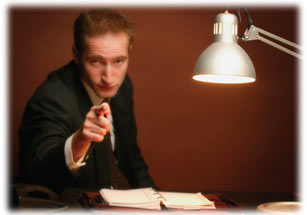 Wisconsin Lawyer
Wisconsin Lawyer
Vol. 80, No. 10, October 2007

 awyers work hard for their clients. They often put in long hours of legal research, carefully review complex documents, guide clients through contentious negotiations, or represent their clients through stressful court proceedings.
awyers work hard for their clients. They often put in long hours of legal research, carefully review complex documents, guide clients through contentious negotiations, or represent their clients through stressful court proceedings.
Sometimes a dissatisfied client concludes the lawyer failed to exercise the appropriate care and skill required of a Wisconsin lawyer, and the client then brings a claim for legal malpractice. In some such instances the harm caused by the lawyer's shortcomings will be clear, and the duty to "make it right" for the client will be promptly acknowledged by the lawyer and the lawyer's malpractice carrier. However, in other situations the lawyer may be justified in resisting the claim if, even after careful reflection and self-examination, the lawyer concludes the client's claim is legally or factually unfounded.
In some situations the lawyer may defend against the claim by establishing that he or she did in fact meet the applicable standard of care. Sometimes the lawyer may show that no lawyer-client relationship ever existed. In other situations, the lawyer may fairly raise the statute of limitation as a defense. In appropriate situations, however, the lawyer will be fully justified in demonstrating that the harm claimed by the client actually was the result of client misconduct, rather than the actions or inactions of the lawyer. This article discusses the types of client misconduct that most often can be raised as defenses in legal malpractice actions.
 Russell M. Ware, Marquette 1971, is a trial lawyer in the Milwaukee office of SmithAmundsen LLC, focusing in the defense of professional liability and personal injury matters. He also serves as a mediator and arbitrator in civil matters.
Russell M. Ware, Marquette 1971, is a trial lawyer in the Milwaukee office of SmithAmundsen LLC, focusing in the defense of professional liability and personal injury matters. He also serves as a mediator and arbitrator in civil matters.
Client Negligent Misconduct During Representation: Contributory Negligence Defense
To establish a claim of professional negligence against a lawyer, the client must prove that the lawyer failed to exercise reasonable care and skill or lacked the reasonable knowledge required to properly perform the lawyer's professional duties.1 A lawyer who claims to have special expertise in an area of law will be held to an even higher standard of care.2 A failure to meet the applicable standard of care will constitute negligence on the part of the lawyer.3 When such an action is brought, contributory negligence on the part of a client is a recognized defense in Wisconsin that can be raised by the defendant lawyer.4
Numerous types of client action or inaction could constitute contributory negligence in such legal malpractice actions.5 A client sophisticated in real estate matters may carelessly fail to execute needed real estate documents when no reminder from a lawyer should have been necessary.6 The client may fail to cooperate with reasonable requests from the lawyer concerning the prosecution of a claim.7 The client may give the lawyer an inaccurate medical history and thereby compromise the viability of a personal injury action.8 The client may withhold from the lawyer needed authority to take recommended legal steps to protect the client's interests.9 The client may fail to appear at an important hearing10 or neglect to deliver important documents to the lawyer in a timely fashion.11
Regardless of the type of client negligence involved, the defendant lawyer has the burden of proving that the client was negligent.12 In carrying that burden, a lawyer who seeks to establish that a former client has been contributorily negligent is permitted to divulge the contents of otherwise privileged communications without running afoul of any statutory or ethical prohibitions on such disclosure.13 If client negligence is proven, such negligence will be treated just like the negligence of any plaintiff in a civil action and will be compared against any negligence attributed to the defendant lawyer so as to reduce or even bar any damage award.14
There is no standard civil jury instruction in Wisconsin concerning the contributory negligence of a client in a legal malpractice action. Therefore, if a circuit court finds sufficient evidence of contributory negligence to submit an inquiry to the jury on this issue, the court and counsel must craft an appropriate instruction tailored to the case. Such an instruction in a hypothetical case involving claimed errors by a lawyer who had represented a plaintiff in a personal injury matter might read as follows:
"You are instructed in answering Question __ (the verdict question inquiring as to the negligence of the plaintiff/client) that a client has a duty to exercise ordinary care in advancing the prosecution of his/her claim for bodily injuries. To meet that duty, the client must exercise ordinary care to cooperate with the reasonable requests of the lawyer designed to further the prosecution of the client's cause, to respond to communications from the lawyer in a reasonable fashion, to be accurate and truthful in giving information to the lawyer that bears on the claim, and to reasonably assist the lawyer in the prosecution of the claim. You are instructed, however, that the client is not required to take actions that only a lawyer would have the training or expertise to take, and that the client is not required to exercise the degree of care and skill required of the lawyer. A client is only required to act as a reasonably prudent client would act under like or similar circumstances. You are further instructed that a client is not negligent merely because the client trusts the lawyer to properly perform the legal services, as long as that trust was reasonable under the circumstances."15
Special Defense Pleading Requirements in Contributory Negligence Cases. A defendant who believes a plaintiff has been guilty of contributory negligence is required by statute to raise that defense in the responsive pleading.16 This requirement applies with equal force to legal malpractice cases; a lawyer who believes client negligence has been the cause of the client's perceived harm must plead the defense, or it is waived.17 While amendments to pleadings are to be allowed freely to permit presentation of the merits of an action,18 it has been said that a defendant lawyer who does not give the plaintiff sufficient notice of the intent to offer evidence of contributory negligence - either through responsive pleadings or otherwise - may lose the right to assert the contributory negligence defense at the time of trial.19
Client Fraudulent or Illegal Misconduct During Representation: In Pari Delicto Defense
In a typical legal malpractice action, the client claims to have followed the lawyer's direction in the good-faith belief that the lawyer was giving appropriate advice to accomplish a legitimate client goal. The client asserts that the lawyer's carelessness or inattention caused the client harm. In some situations, however, the client will allege that the client suffered legal harm because, in following the lawyer's advice, the client committed illegal or immoral acts. In such situations, the appropriate defense that the lawyer should raise in a malpractice suit is not contributory negligence but instead the special defense called in pari delicto.
In pari delicto is an equitable doctrine. Resting as it does on the public policy principle that a court will not lend its aid to one who founds the cause of action on his or her own immoral or illegal act,20 the doctrine says that the law will not permit persons who participate in illegal acts to obtain relief from the harm they sustain when caught in their wrongdoing by seeking reimbursement from another participant in the misconduct.21 This doctrine can be invoked successfully in a legal malpractice suit in Wisconsin.
In Evans v. Cameron,22 a debtor had lied under oath at a bankruptcy hearing on the advice of her lawyer. When the untruthfulness was uncovered, the client was denied the protection of the bankruptcy laws and so sustained considerable financial and emotional harm. The client then brought a legal malpractice action against the lawyer who had recommended that the client testify untruthfully, seeking both compensatory and punitive damages for the improper legal advice. The defendant lawyer moved to dismiss the action on the ground the complaint failed to state a claim on which relief may be granted.23 The circuit court granted the motion to dismiss, stating that the client and the lawyer as a matter of law stood in pari delicto and that the client therefore could not prevail on the claim. The Wisconsin Court of Appeals affirmed the dismissal,24 as did the Wisconsin Supreme Court. The supreme court held that the public policy interest in discouraging attorney misconduct was insufficient to justify shielding a person who had deliberately and willfully lied under oath in bankruptcy proceedings from the consequences of such wrongdoing by giving the person an opportunity to seek damages against the person's former lawyer. The proper deterrent to a lawyer who might recommend illegal acts should be professional discipline, said the court, and not the threat of a civil action by the joint wrongdoer.25
However, not in every situation involving intentional wrongdoing by both the client and the lawyer will the parties be held in pari delicto so as to warrant imposition of this special doctrine and bar a legal malpractice action. Because the words in pari delicto mean "in equal fault," in situations in which the client's guilt is clearly far less than that of the lawyer, the doctrine of in pari delicto has no application.26 If the wrongful acts by the client were brought about by oppression or imposition of hardship or by undue influence or were due to great inequality in condition or age between the client and the lawyer, the client's guilt may be so far less than that of the attorney that they are not equal in guilt.27 Likewise, in some situations in which the client has committed wrongful acts on the advice of the lawyer, the circumstances to which the advice relates may be so complex that the wrongfulness was not apparent to the client; in such a situation, the wrongfulness of the parties' conduct is not treated as equal.28 However, in situations of egregious client wrongdoing, such as lying under oath, the client's acts will be deemed so wrongful on their face, and the wrongfulness so apparent to even the least sophisticated client, that the client conduct will automatically bar a claim against any lawyer who is alleged to have recommended such a course of action.29
The doctrine can be invoked defensively at the pleading stage in appropriate cases. If the plaintiff's complaint describing the circumstances surrounding the representation and the wrongfulness of the client's acts provides a sufficient basis for a court to find the claim barred on in pari delicto grounds as a matter of law, a motion to dismiss for failure to state a claim will be granted.30 In situations when the plaintiff's own pleadings do not demonstrate the parties are in pari delicto, however, the defendant lawyer must raise the defense and be prepared to affirmatively demonstrate that the plaintiff's misconduct puts the plaintiff in pari delicto with the lawyer and so bars the claim.
Special Rule Concerning Proof of Client Misconduct in In Pari Delicto Cases. If the applicability of the in pari delicto defense is not established in the plaintiff's own complaint, the defendant lawyer must proceed to prove the wrongfulness of the client's conduct. However, in an appropriate situation the defendant may still be able to avoid a trial by defeating the claim at the summary judgment stage. The defendant who can demonstrate that the client was criminally convicted may, using principles of issue preclusion, conclusively establish the character of the client's misconduct and thereby avoid the need for any factual inquiry at trial.31 However, the Wisconsin Supreme Court has recently clarified - and in fact limited - the extent to which a defendant lawyer can use issue preclusion principles as the basis for prevailing on an in pari delicto defense.32 It now appears that before a defendant can invoke issue preclusion and thereby use a criminal conviction as conclusive proof of the client's wrongful conduct, the defendant must show that the conviction took place after a contested criminal trial.33 Indeed, even a client's guilty plea to criminal conduct in a previous criminal action may not prevent the client from factually contesting the applicability of the in pari delicto defense in the later legal malpractice action and from demanding a trial on the issue.34
Special Client Misconduct Defense Available to Criminal Lawyers in Wrongful Conviction Suits: Actual Innocence Rule
A criminal defense lawyer is subject to liability to a client if the lawyer's negligence during the representation results in the client's wrongful conviction.35 However, Wisconsin law creates a special public policy hurdle for plaintiffs who claim they were wrongfully convicted due to the lawyer's negligence. In such situations, it is not enough for the client to show that he or she would have escaped conviction but for lawyer error, such as by showing that evidence crucial to the prosecution's case would have been suppressed by a timely defense motion. On the contrary, the client bringing a suit against the criminal defense lawyer alleging harm in the form of a wrongful conviction must affirmatively prove by a preponderance of the evidence that the client was truly innocent of the criminal charges in the first place.36 This actual innocence requirement is not the same as the causation-in-fact requirement used in the civil context; it is rather an additional proof requirement resting purely on public policy grounds and is therefore imposed in addition to the standard causation element that must be proved in all legal negligence situations.37 As in situations in which client contributory negligence is at issue, the lawyer against whom the claim is made will be allowed to divulge confidential communications, because a client charging ineffective assistance waives the attorney-client privilege with respect to communications relevant to such issue.38
It must be noted that the client misconduct barring the wrongful conviction claim against the criminal defense lawyer in such a situation is different than the criminal misconduct in the contributory negligence or in pari delicto scenarios. In the situation involving the suit against the criminal defense lawyer, the client misconduct that warrants a denial of any access to civil remedies against the lawyer predated the representation by the lawyer; in the contributory negligence and in pari delicto scenarios, it is the client conduct during the period of representation that will limit or bar the claim against the lawyer.
Conclusion
Lawyers have a duty to work skillfully and energetically on behalf of their clients. However, the lawyer-client relationship is not a one-way street. In a situation in which the real cause of the client's harm is properly said to be the client's own misconduct, the defendant lawyer can and should raise the appropriate defense of contributory negligence, in pari delicto, or no actual innocence.
Endnotes
Wisconsin Lawyer
